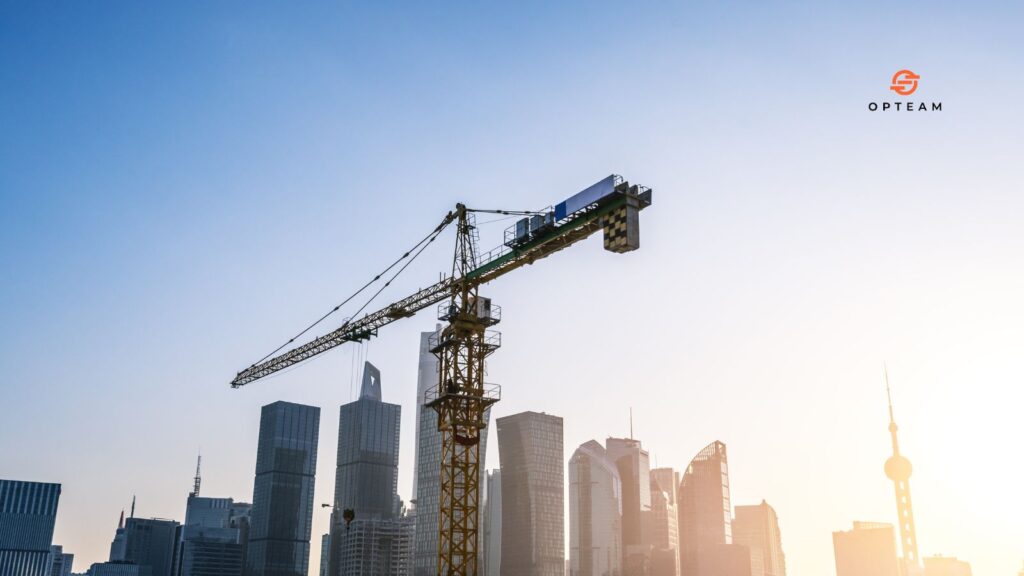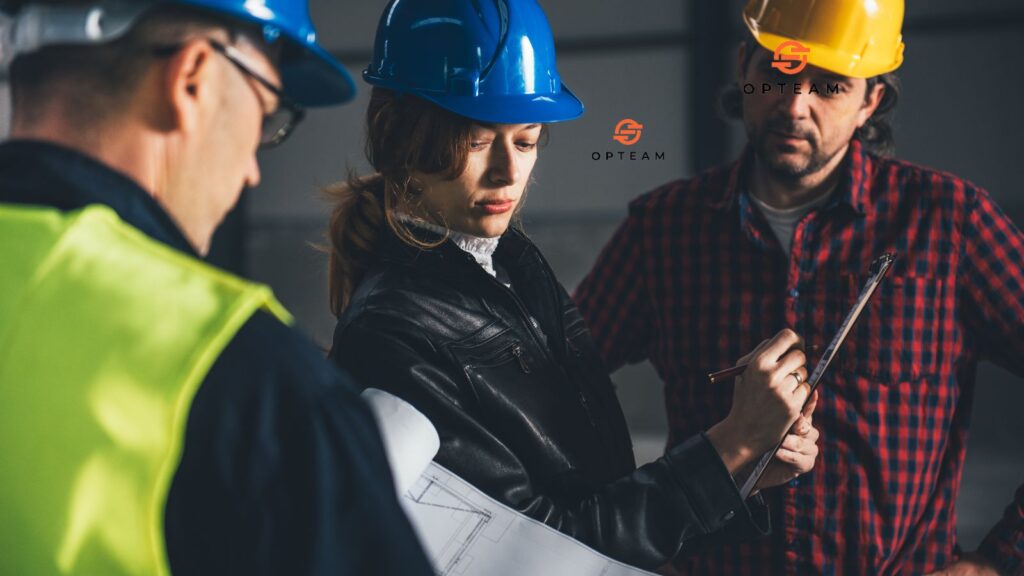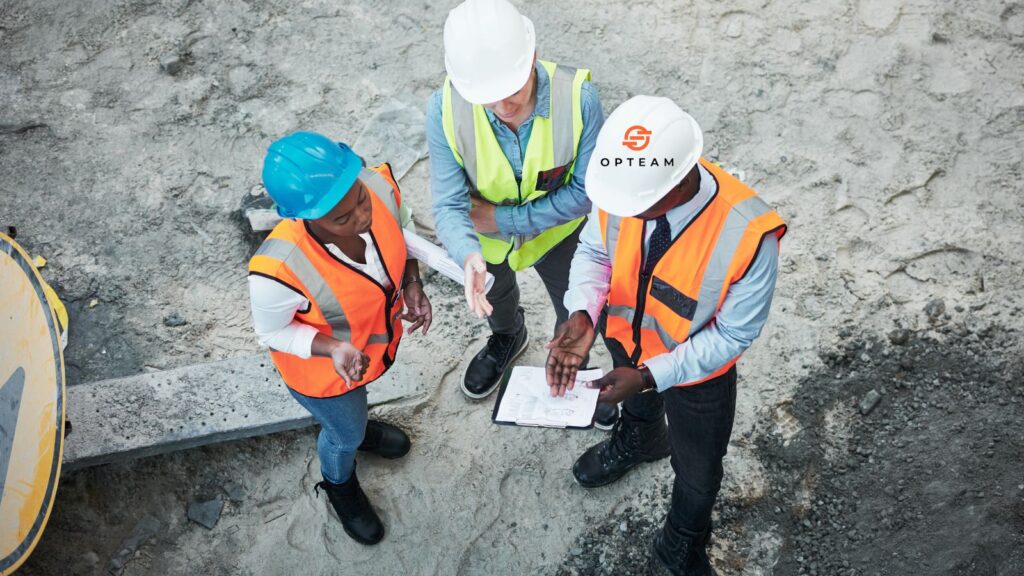BEST Guide: Understand Finish to Start Dependency in Construction Projects

A Finish-to-Start (FS) dependency is the most common relationship used in construction scheduling. It simply means Task B cannot start until Task A is fully finished. For example, you can’t start installing drywall until the framing is complete, the successor activity is locked behind the predecessor’s completion. This relationship helps planners sequence work logically, avoid overlaps that could cause rework, and build a schedule that reflects how construction actually happens on-site. In practice, FS dependencies are used throughout project schedules in tools like Primavera P6 or MS Project to define workflow, calculate the critical path, and forecast delays. They also allow planners to add lags, such as waiting 2 days after pouring concrete before removing formwork. Why Finish-to-Start Dependencies Matter in Construction Scheduling Finish-to-Start (FS) dependencies are the foundation of construction schedules. They define that one activity cannot begin until another finishes. Without FS logic, your schedule is just a list of tasks — it won’t reflect how work actually flows on-site. Key reasons FS matters: Example: If concrete curing takes 7 days, FS logic ensures that floor finishes don’t start until curing is complete. This prevents unrealistic start dates and avoids costly mistakes. FS dependencies also support resource planning. Knowing the sequence allows project managers to allocate crews, equipment, and materials efficiently. And with modern AI tools, FS logic can be analyzed to detect missing connections, unnecessary lags, or risky sequences — making your schedule smarter and more reliable. How FS Dependencies Affect the Critical Path The critical path is the series of tasks that determines the project’s minimum duration. FS relationships heavily influence which tasks end up on this path. Important points: Practical tip: If a structural task delays, planners can sometimes convert FS to Start-to-Start (SS) with a small overlap to recover time, but this requires careful analysis. FS dependencies also make forecasting and reporting more accurate. Software recalculates timelines automatically, showing how a slip in one activity affects project completion. AI tools can even flag unrealistic FS chains or excessive lags, helping planners proactively manage the schedule. In short: FS dependencies are not just a technical detail, they are the backbone of your schedule’s predictability, accuracy, and critical path integrity. FS vs Other Dependency Types: SS, FF, SF Explained Dependency Type Definition Example in Construction When to Use Finish-to-Start (FS) Task B cannot start until Task A finishes Drywall installation starts only after framing is complete Most common; use for sequential tasks Start-to-Start (SS) Task B cannot start until Task A starts Painting starts at the same time the drywall is being installed When tasks can overlap partially Finish-to-Finish (FF) Task B cannot finish until Task A finishes Electrical testing cannot finish until conduit installation finishes When completion of tasks must be synchronized Start-to-Finish (SF) Task B cannot finish until Task A starts Security setup must remain until site evacuation starts Rarely used; for specialized scenarios or handover dependencies Quick notes: Tips for Setting Up FS Logic Without Errors Always define clear predecessors and successorsMake sure every FS link has a logical reason, avoid linking tasks just to “fill the schedule.” Check for circular dependenciesFS errors often happen when a task accidentally depends on its own successor. Most scheduling tools will flag this, but a manual check helps. Use realistic durationsDon’t create FS links with tasks that finish unrealistically fast; this can create artificial delays downstream. Apply lag only when necessaryLags (waiting periods between FS tasks) should reflect real-world constraints, like curing concrete or drying paint. Avoid unnecessary FS linksOver-linking can make schedules rigid and difficult to update. Only link tasks that truly need sequencing. Validate with the teamConfirm FS dependencies with site engineers and subcontractors to ensure the sequence makes sense on-site. Regularly audit the scheduleUse scheduling software or AI tools to detect missing links, excessive lags, or illogical FS chains. Document your logicShort notes on why a dependency exists help new planners understand the schedule and avoid mistakes later. Keep critical path in mindFocus FS accuracy on tasks affecting the critical path — small errors there can delay the whole project. Test schedule changes before committingAny changes to FS links should be simulated to see the effect on timelines and float. Take Control of Your Schedule with Your Own AI Imagine having a private AI that fully understands your company’s projects, workflows, and scheduling logic — including all your FS dependencies. With Opteam, you don’t need to manually track every link or worry about misconfigured sequences. Simply upload your project files, and your AI is ready to provide instant insights, detect risky FS chains, and generate accurate progress reports. Stop guessing which tasks are critical or which delays will cascade through your project. With your own company-trained AI, you can: Take the first step toward smarter, faster, and more reliable scheduling. Create your free Opteam account today and turn your project data into actionable insights.
As Built Drawings in Construction: All What You Need to Know

As-built drawings are updated versions of construction drawings that reflect the exact conditions of a project after it’s been built. Unlike design drawings that show how things are supposed to be, as-builts show how they actually ended up on site, including any changes, reroutes, material substitutions, and dimensions. These drawings are usually developed progressively throughout construction, capturing every modification made due to on-site constraints, unforeseen clashes, client changes, or value engineering decisions. By the end of the project, the as-built set becomes the most accurate representation of the structure. Contractors, consultants, and facility managers rely heavily on as-built drawings for future maintenance, renovations, system upgrades, and dispute avoidance. They help locate concealed services like electrical conduits, HVAC ducts, and plumbing pipes, preventing costly rework or accidental damage later on. In many jurisdictions, submitting as-builts is mandatory for project handover or occupancy certification. Ultimately, they serve as a long-term knowledge base, reducing lifecycle costs and providing clarity for everyone operating the building after construction teams move on. As-built drawings requirements General Requirements Technical Content Formatting & Standards Submission & Approval Who is responsible for as-built drawings? As-built drawings are primarily the responsibility of the contractor. Throughout construction, the contractor must track every change made on site compared to the original design, update the drawings accordingly, and coordinate with subcontractors to capture accurate locations of architectural elements, structural modifications, and MEP services. Site engineers, supervisors, and subcontractors contribute field measurements, mark-ups, and redlines so the contractor can continuously maintain an up-to-date record of all deviations, reroutes, and material substitutions made during execution. The consultant (or supervising engineer) is responsible for reviewing, verifying, and approving these as-built drawings before handover. They check accuracy, completeness, and compliance with project requirements. In some projects, the client or facility management team may request additional details for future maintenance. Ultimately, the contractor produces them, subcontractors contribute data, and the consultant signs them off as part of the final close-out package. How to create as-built drawings? Creating as-built drawings starts during construction, not after. The contractor and site team document every deviation from the original design using field measurements, mark-ups, and digital redlines as work progresses. This includes routing changes, shifted dimensions, substituted materials, and hidden services. Site engineers collect data through inspections, photos, and coordination with subcontractors, ensuring nothing is missed before elements are covered up. Accurate and continuous record-keeping is key, because relying on memory at the end of the project usually leads to errors. Once the project is complete, these field notes are consolidated into clean CAD, PDF, or BIM drawings that reflect the exact final conditions. All revisions must be clearly labeled, dated, and reviewed by the consultant for approval. Equipment tags, capacities, and installation details are added for maintenance reference. Before submission, the drawings are checked for consistency, legibility, correct layering, and compliance with project standards. When approved, the as-builts are included in the handover package for the client and facility management team. How much do as-built drawings cost? The cost of as-built drawings varies based on project size, complexity, and the level of detail required. Small residential projects can range from a few hundred dollars up to around a thousand, while commercial or industrial sites are typically priced per square meter or per square foot. For larger buildings with complex mechanical, electrical, and plumbing systems, the price increases due to the extra coordination and verification required. In some cases, costs can rise further if the original drawings are missing or outdated, since more field verification is needed. Pricing models commonly include a flat project fee, a rate per drawing sheet, or an area-based rate. More advanced deliverables like BIM models, laser scanning, or highly detailed asset tagging can push the cost higher. Factors such as limited site access, tight deadlines, and heavy design changes also add to the price. Ultimately, the cost reflects how much effort is needed to accurately document the real-world conditions of the finished construction. Streamline As-Built Documentation with Opteam Managing updates manually throughout a project leads to missing information, late mark-ups, and handover headaches. Opteam solves this by centralizing site progress, automatically collecting updates from the field, and keeping your project data clean and accurate as construction evolves. Engineers can effortlessly track changes, generate reports, and maintain a reliable record of what was actually built — without chasing subcontractors or sorting through spreadsheets. With Opteam, you gain a smarter, more organized workflow that reduces rework, improves handover quality, and speeds up as-built preparation. Your project history becomes searchable, structured, and ready for future reference. Stop managing chaos and start building clarity. Take control of your construction data — try Opteam free for two weeks at this link.
Best Contractor Tracking Software – Built for Consulting Companies

When you run a consulting company, contractor tracking can get messy fast. You’re chasing site updates on WhatsApp, waiting on weekly reports, digging through spreadsheets, and trying to explain progress to clients while half the information is already outdated. It is stressful, slow, and honestly, not what you should be spending hours on. That’s why consulting firms are starting to look for contractor tracking software built specifically for the way they work, not another generic project tool. And this is where Opteam stands out. You upload your project documents, and Opteam automatically learns from them to track progress, communicate with site teams, and give you real-time visibility without all the manual busywork. If you are tired of surprises, late updates, and scrambled reporting before client meetings, keep reading. This article breaks down why Opteam is becoming the go-to contractor tracking platform for consulting companies that want control, clarity, and clean reporting without the chaos. Why Consulting Firms Need Contractor Tracking Software Now Consulting companies live and die by clarity. Your clients expect accurate progress updates, clean reports, and confident answers when something slips. But relying on spreadsheets, forwarded WhatsApp messages, and weekly PowerPoints puts you permanently on the back foot. By the time you gather updates from contractors, the information is already outdated. Contractor tracking software solves that gap. It gives consultants live visibility into what is happening on site, who is responsible for each activity, and how actual progress compares to the baseline plan. Instead of chasing updates, you get automatic reminders, structured inputs, and a real-time dashboard that highlights delays before they snowball. More importantly, contractor tracking protects your professional reputation. You avoid awkward client meetings, last-minute report scrambles, and arguments about “who said what” because the data is centralized and timestamped. It also strengthens your ability to validate claims, justify extensions, and support commercial discussions with facts rather than assumptions. In short: the old way was manageable when you had fewer projects, smaller teams, and slower timelines. Today’s consulting environment moves too fast and demands too much transparency. Modern firms need a system built to keep contractors accountable and give you instant answers whenever a client asks. That is why dedicated contractor tracking software has shifted from optional to essential. Key Features to Look For in Contractor Tracking Software Real-Time Progress Visibility Across All Contractors Consulting firms rarely struggle with planning, they struggle with knowing what’s actually happening on site. Real-time visibility lets you see progress the moment it’s reported, instead of waiting for weekly PDFs or phone calls. You immediately spot slipping activities, underperforming contractors, and delayed handovers. When a client asks “how are we doing?”, you have an answer in seconds — not after three emails. Automated Communication With Site Teams (No Manual Chasing) A big chunk of a consultant’s week is wasted chasing site engineers and subcontractors for updates. Automation should handle that. Daily or weekly reminders go out on your behalf, collect structured progress inputs, and push them straight to your dashboard. No more WhatsApp chaos, missing updates, or awkward follow-ups. Centralized Source of Truth for Claims, Delays, and Approvals When documentation is scattered, disputes turn into headaches. A centralized system keeps every update, confirmation, and delay note in one place — timestamped and linked to the schedule. When extensions of time, variation orders, or claims come up, you’re backed by clean evidence. This saves you hours of forensic digging later. AI-Generated Reports and Dashboards in Seconds, Not Weeks Reporting is where consultants lose productivity. Weekly decks take hours to assemble, cross-check, and format. AI can generate progress summaries, delays, impacts, and charts instantly. You spend time reviewing insights instead of building spreadsheets. And clients love fast, data-driven reports. Easy Upload of Project Documents to Kickstart Tracking Instead of manually configuring the system line by line, you should be able to upload schedules, BOQs, drawings, anything your consultant workflow already uses. The system reads the structure, maps activities, and starts tracking immediately. It reduces onboarding friction and removes the need for technical configuration skills. Schedule Comparison: Planned vs Actual Progress Progress only matters compared to plan. Good software clearly shows baseline vs actual, identifies slippages, flags activities at risk, and highlights where productivity is slow. This comparison drives better conversations with contractors, and helps you proactively prevent delays instead of reacting to them. Role-Based Access and Secure Data Control for Consultants Consulting firms deal with confidential client information, and not everyone should see everything. Role-based access lets you decide who can view, edit, approve, or upload. You maintain compliance, protect sensitive data, and ensure contractors only see what they’re supposed to. Historic Data Insights to Improve Future Project Planning Consultants rarely get the chance to learn from past projects, because data lives in folders nobody opens again. AI can surface patterns: recurring delays, seasonal productivity drops, typical durations, realistic outputs. These insights improve planning accuracy and make you look sharper in client conversations. Mobile-Friendly Updates for On-Site Teams If updating progress requires a laptop, it won’t happen consistently. Mobile inputs give on-site teams a simple form to submit progress, photos, comments, and blockers. It reduces excuses, increases update frequency, and keeps you continuously informed no matter where people are. Audit-Ready Documentation for Client Meetings Client meetings are easier when everything is documented. Instead of scrambling through slides and screenshots, you can pull up a clean timeline of updates, issues, and resolutions. When a delay is questioned, you have timestamps, communications, and supporting data. That credibility builds trust — and protects fees. Why Opteam Outshines Generic Project Management Tools Most project management platforms weren’t built for the realities of consulting in construction. They’re good at task lists and timelines, but they don’t solve the painful workload that consultants face every week: chasing contractors for updates, preparing progress reports, defending timelines, and answering tough questions in client meetings. That’s where Opteam separates itself. Opteam is designed around how consulting companies actually work. Instead of forcing you to manually feed it data, you simply upload
Quantitative Schedule Risk Analysis: Full Guide

Construction schedules rarely go exactly as planned. Weather shifts, late approvals, supply hiccups, and subcontractor performance can quickly turn a confident timeline into a scramble. Yet many schedules are still built on single-point duration estimates, assuming every activity finishes exactly on time. That’s where Quantitative Schedule Risk Analysis (QSRA) becomes essential. QSRA applies probabilities and data-driven simulations to your schedule to show how uncertainties will actually impact project completion. Instead of guessing, you can measure schedule risk, predict realistic finish dates, and understand which activities are most likely to blow up the timeline. The result? Better contingency planning, stronger negotiation power, fewer surprises, and far more credible communication with owners and stakeholders. In this guide, we break down QSRA from the ground up, what it is, how it’s done, the tools involved, and why it’s becoming a standard requirement in major construction programs. Whether you’re a planner, contractor, or client-side PMO, you’ll learn exactly how QSRA turns a baseline schedule into a risk-aware roadmap that protects both deadlines and profit margins. What is Quantitative Schedule Risk Analysis? Quantitative Schedule Risk Analysis (QSRA) is a method used in construction project management to measure how risks and uncertainties will affect a project’s timeline. Instead of assuming every task finishes exactly on its planned duration, QSRA assigns probability ranges to activities and runs thousands of simulations to reveal a realistic range of completion dates. This gives planners and stakeholders visibility into the likelihood of meeting key milestones and the amount of schedule contingency they should carry to protect the finish date. QSRA also identifies the specific activities and risks that have the greatest potential to delay the project, helping teams focus their mitigation efforts where they matter most. Because the results are based on statistics rather than subjective judgments, QSRA strengthens negotiations during progress reviews, supports defensible claims when delays occur, and improves decision-making throughout the project lifecycle. How Quantitative Schedule Risk Analysis Works in Practice QSRA might sound complex, yet the workflow is straightforward once you see the steps. It connects real project schedules with real risk exposure to show what is actually possible, not what we hope will happen. The Inputs That Matter To perform QSRA, you need three main components These three points allow the simulation to understand how durations might shift in reality. Procurement packages may take longer than expected. Weather windows might shrink. Approvals may slip. The model captures all that. Monte Carlo Simulation Here is where the analysis becomes powerful. The engine tests thousands of schedule outcomes under uncertainty. Each run uses different duration combinations and risk triggers. The output is a full picture of how likely each finish date really is. The biggest difference from a baseline is simple. A normal schedule gives you one date. QSRA gives a confidence curve that tells you the truth. For example This is real risk control. It exposes what could go wrong before it becomes a claim, while clearly showing what needs attention now to protect the finish line. Why QSRA Is Essential for Contractors and Consultants Construction is full of uncertainty. What QSRA does is transform that uncertainty into measurable, defensible intelligence. It shifts teams from reacting to problems to anticipating them. The Strategic Benefits Owners appreciate QSRA because it prevents surprises. Contractors appreciate it because it provides evidence. When delays happen, QSRA results help demonstrate which risks were unavoidable and which were already identified. This becomes critical in determining entitlement for time extensions. Protecting Profitability A late project means extra staff, extended preliminaries, liquidated damages and damaged reputation. QSRA flags the financial consequences of slippage early enough that teams can still intervene. It highlights the top risk drivers, the activities that deserve the most attention and mitigation. In short, QSRA improves trust and reduces disputes. It proves who managed the schedule responsibly and who did not. It is not only a risk tool, it is a claims defense shield and a credibility booster for project teams. The Tools Used for QSRA and How They Connect to Primavera Primavera P6 is the backbone of many project schedules. QSRA builds on top of it. Think of it like thisP6 creates the plan, while QSRA validates whether that plan is actually achievable. How They Work Together Common Tools Used With Primavera These tools plug into the schedule and generate charts such as confidence curves and tornado diagrams. They also allow scenario planning, what if the steel package arrives late, what if approvals take three weeks longer. With this capability, planners become proactive. They make decisions before delays crystallize. Software alone is not enough though. The strength of QSRA depends on the maturity of the schedule. Clean logic, realistic sequencing and accurate durations are the foundation. When those are strong, QSRA gives unmatched clarity that a static baseline simply cannot deliver. Understanding Confidence Levels: P50, P70, P80 and What They Mean for Decisions QSRA outputs are often summarized using confidence levels. These show how likely it is to achieve a specific completion date. Instead of giving stakeholders a single promise, planners present a set of outcomes backed by probability. The Most Common Confidence Points A P50 finish date is technically possible, yet risky. A P80 finish date is safer but may require longer delivery. Stakeholders choose which point to adopt depending on project complexity, contract conditions, and risk appetite. Why It Matters in Real Conversations Imagine your project has a baseline finish by December 10. QSRA results might show Now the question becomes a leadership decisionDo we hold to December and invest in mitigationOr do we realign expectations based on modeled reality Without QSRA, this discussion would be guesswork. Confidence levels turn it into strategic planning. Common Mistakes That Make QSRA Results Misleading Even the best simulation tools cannot fix a weak foundation. QSRA is extremely sensitive to schedule quality. When the inputs are flawed, the outputs can be dangerously deceptive. Frequent Issues When risk data is poorly aligned with real project behavior, QSRA becomes noise instead of insight. Results
Can Excel open a XER file? And a Better Easy Alternative

In simple words, no, Excel cannot open an XER file. XER is the extension of Primavera P6 construction schedule files that are used widely in construction. And the fact that you’re trying to open them with Excel means that you’re losing a very precious chance of getting instant insights and visualize your construction schedule easily. You might be asking, how? The answer is simple, it’s through Opteam construction progress tracking software. And while we offer custom quotes based on project size & number of users, we do offer a free trial that you can use to get instant AI generated insights on the health of your XER file without the need to do it manually through boring Excel sheets. How to Open an XER file with Opteam? 1- First go to this link and create your free account. 2- During onboarding, you will be asked to upload your P6 file. 3- Continue the onboarding steps. 4- Head to Projects, click on your project name. 5- A custom dashboard will open that has a score out of 100 that reflects how health your P6 file is, with AI generated insights on issues present in the file and how to fix them. Why Excel Sucks for Construction? Let’s face it, Excel is from the sixties. And after all, it wasn’t built for construction, it’s just another boring spreadsheet app. Despite this, most construction companies are still using it to manually collect progress data. They waste time (more than two weeks) to consolidate a simple report that’s when ready, it’s already too late and the effect of the delay already happened. Alternatively, top construction companies like Dar Al Handasah are using Opteam to automated this process. How? Basically, what Opteam does is that it automates the progress tracking process by communicating with site teams through Whatsapp. It sends automatic Whatsapp messages that has progress update forms to collect data from your site teams on your behalf. This data is automatically integrated into your P6 files, and is reflected on your custom dashboards. This replaces the traditional way of collecting data in construction that’s been there since ages, which constitutes of first sending manually created Excel files to site teams, waiting for more than two weeks for them to get back with manual updates, and then manually adding this data to P6 files, which is: Ready to Open & Analyze your P6 Files for free Without Primavera and Excel? Create your free Opteam account now, upload your P6 files and get AI generated insights for free!
Construction Delay Impact Estimator

Construction Delay Impact Estimator | Opteam 🏗️ Construction Delay Impact Estimator Total Project Duration (days) Planned Completion Date Activity Delay (days) Is the Activity on the Critical Path? YesNo Estimated Cost per Day (optional) Estimate Delay Impact 📊 Delay Impact Summary Common Causes of Construction Delays and How to Anticipate Them Construction projects are complex operations with many moving parts, and delays often happen when just one element breaks down. Some of the most frequent causes include design changes mid-project, slow approvals, poor weather conditions, supply chain disruptions, and labor shortages. Another hidden cause is incomplete planning at the start of a project. When schedules are unrealistic or lack clear milestones, every small setback snowballs. Subcontractor coordination can also lead to bottlenecks — if one trade is late, the next can’t start on time. To anticipate delays, teams should start with a realistic baseline schedule that includes contingencies for risk-prone activities. Regular schedule health checks help flag issues early, like tasks running behind or resource overload. Clear communication channels between the owner, general contractor, and subs ensure that decisions aren’t delayed when unforeseen challenges appear. Technology can also help: real-time progress tracking gives managers an early warning system before issues turn into costly delays. While delays can’t always be avoided, spotting the warning signs early can keep a small slip from turning into a major disruption. Pro tip: Tools like Opteam give you real-time schedule health insights so you can catch risks before they become costly delays. The Financial Impact of Project Delays on Contractors and Owners Delays are not just inconvenient — they’re expensive. Every extra day on site means higher overhead costs, from field supervision to rented equipment and temporary utilities. Owners often face extended financing costs and delayed revenue streams, while contractors risk liquidated damages if deadlines aren’t met. For example, a 200-day project delayed by 10% adds 20 extra days of cost. If the daily overhead is $5,000, that’s an additional $100,000 before accounting for claims or penalties. Supply chain fluctuations can also increase material prices if schedules slip into a new season or market condition. Another cost comes from lost opportunity. Owners can’t use or lease the completed facility, and contractors can’t move resources to the next job. This ripple effect can reduce margins on future work. To avoid financial surprises, it’s crucial to monitor delay exposure continuously. Early identification lets teams implement mitigation strategies — resequencing work, increasing crews, or negotiating time extensions. Understanding the true cost of each delay day helps decision-makers act fast when schedules start slipping. Want to see the financial impact of delays in real time? Opteam helps you track schedule changes and cost exposure instantly. How Delays Affect Project Schedules, Cash Flow, and Claims When a project falls behind, the impact extends beyond the calendar. Schedules shift, forcing trades to work out of sequence, which can increase inefficiency and risk rework. Cash flow also suffers. Contractors may have to pay labor and equipment costs for longer, while progress payments from owners are delayed. This strains working capital and can lead to borrowing or slower payment to subcontractors. Delays are also a breeding ground for claims and disputes. If no clear delay analysis exists, contractors and owners often disagree on who’s responsible for extra time and cost. These conflicts can escalate to formal claims, arbitration, or litigation — all of which are expensive and time-consuming. To reduce this chain reaction, projects should maintain accurate, up-to-date schedules and document changes carefully. Clear records allow teams to demonstrate delay causes and negotiate extensions or compensation fairly, avoiding disputes later. With Opteam, you get automated progress updates and delay impact visuals that make claims discussions clear and data-backed. Best Practices for Minimizing and Managing Construction Delays Managing delays starts long before they happen. Successful teams use a combination of planning, monitoring, and response strategies: Equally important is documenting every change and keeping stakeholders informed. Transparent, data-backed reporting reduces conflict and helps secure time extensions when delays are outside your control. Opteam automates schedule health checks and real-time reporting so you can act on risks before they cause costly project delays. The Role of Accurate Delay Analysis in Avoiding Disputes Delay analysis isn’t just paperwork — it’s a critical defense against claims. When a project is late, the first question is always: Why? Without clear records, everyone points fingers, and disputes can escalate quickly. Accurate delay analysis creates a timeline of events, showing when the delay happened, how it impacted the critical path, and who was responsible. This evidence is essential when requesting time extensions or defending against liquidated damages. Different methods exist — from as-planned vs. as-built comparisons to time impact analysis (TIA). The key is keeping schedules updated so the analysis is based on real progress data, not assumptions. For owners, a transparent delay record supports fair decision-making and prevents inflated claims. For contractors, it provides a solid case when delays are caused by design changes, late approvals, or unforeseen conditions. Ultimately, delay analysis turns potential legal battles into informed conversations, helping both parties reach fair resolutions faster and avoid costly litigation. With Opteam, delay analysis is automated and backed by real-time project data, making claims and extensions easier to manage.
Punch List in Construction: Meaning, Sample & More

A punch list in construction is a document prepared near the end of a construction project that outlines work that does not meet contract specifications and must be completed or corrected before final payment. It is typically created during a walkthrough involving the contractor, client, and sometimes the architect or project manager. Why Punch Lists are Important? Punch lists are a critical part of the construction process because they ensure that all contracted work has been completed correctly and to the client’s satisfaction before the project is officially closed. They serve as a final check to catch any missed or substandard work, protecting both the client and the contractor by clarifying responsibilities and expectations. Key Reasons Punch Lists Are Important: Punch Lists Components in Construction A punch list in construction typically includes specific items that need correction or completion before a project is deemed finished. These components ensure a thorough review of the project and provide a structured approach to addressing outstanding issues. Below are the main components commonly found in a construction punch list: 1. Item Description Each entry on the punch list should have a clear and concise description of the issue. This might include incomplete work, defects, or deviations from the project specifications—such as missing fixtures, uneven paint, or improperly installed hardware. 2. Location of the Issue The exact location of each item must be identified to avoid confusion. This could be a specific room, floor, or section of the construction site (e.g., “Room 203 – Left wall near window”). 3. Assigned Responsibility The punch list should specify who is responsible for addressing each item. This may include subcontractors, suppliers, or the general contractor, depending on who performed the original work. 4. Deadline for Completion A completion date should be assigned for each item to ensure timely resolution. Setting deadlines helps keep the project on track and avoids delays in final handover. 5. Status of the Item Each item should have a status indicator—such as “Pending,” “In Progress,” or “Completed”—to track progress as the list is being worked through and updated. 6. Approval or Sign-Off Once an item is completed, it must be reviewed and approved by the relevant party (usually the client, architect, or project manager). The punch list should include space for sign-off or confirmation to verify that the correction meets expectations. 7. Photos or Supporting Notes (Optional) Including photographs or notes can help clarify the issue, especially for complex items. Visual documentation can reduce miscommunication and provide evidence of completed work. Punch List Sample 🏗️ Punch List — Project Completion Review Project Name: Skyline Tower – Phase 2Location: Amman, JordanContractor: ABC Construction Co.Date Issued: 30/09/2025Prepared By: Project Engineer – Eng. Ahmad Khalil Item No. Location / Area Description of Work to be Completed / Corrected Responsible Party Priority Target Completion Date Status / Comments 1 Lobby – Main Entrance Touch up wall paint where scratched near reception desk Painting Subcontractor High 03/10/2025 Pending 2 5th Floor Corridor Replace damaged ceiling tile near Room 503 Ceiling Subcontractor Medium 05/10/2025 In Progress 3 Rooftop Install missing safety handrail section on east side Steel Works Subcontractor High 02/10/2025 Urgent 4 Basement Parking Repaint faded parking bay lines (B2 level) General Contractor Low 07/10/2025 Not Started 5 Electrical Room – Level 3 Label all electrical panels as per spec Electrical Subcontractor Medium 04/10/2025 In Progress 6 Exterior Façade – South Elevation Clean remaining construction debris & adhesive stains on glass Façade Contractor Low 06/10/2025 Not Started 7 Apartment 1204 Adjust misaligned door to ensure proper closing Carpentry Subcontractor Medium 05/10/2025 Pending Always Know Where Your Construction Project Really Stands Managing schedules, progress updates, and claims shouldn’t mean chasing site teams or drowning in spreadsheets. Opteam connects the field with the office in real time — giving you a clear, accurate picture of your project’s health without manual data crunching. Stop guessing. Stop waiting for outdated reports. Opteam puts control back in your hands. 👉 Sign Up Free — Start Your 14-Day Trial
Work Breakdown Structure In Construction: More than a Chart

A Work Breakdown Structure in construction is one of the most effective tools for organizing complex projects into manageable pieces. By breaking down a project into tasks, deliverables, and milestones, teams gain clarity on scope, responsibilities, and progress tracking. This structured approach not only improves planning and resource allocation but also helps contractors, consultants, and project owners stay aligned from start to finish. In this guide, we’ll explain what a Work Breakdown Structure (WBS) is, why it matters in construction projects, and provide a practical template you can use to build your own. What is Work Breakdown Structure (WBS)? A Work Breakdown Structure (WBS) is a project management tool that organizes a project into smaller, more manageable components. Instead of looking at a construction project as one massive task, the WBS breaks it down into hierarchical levels—starting with broad deliverables and narrowing down into specific tasks and work packages. Each level provides more detail, helping project teams understand exactly what needs to be done, who is responsible, and how progress will be measured. In construction, a WBS is especially valuable because projects often involve multiple trades, subcontractors, and complex schedules. By using a structured breakdown, project managers can allocate resources effectively, reduce confusion, and minimize the risk of overlooking critical tasks. It also creates a clear framework for estimating costs, tracking progress, and reporting, making the WBS a cornerstone of successful project planning and execution. Why WBS is Important in Construction Projects? A Work Breakdown Structure (WBS) is critical in construction because it brings structure and clarity to projects that are often complex, large-scale, and involve many stakeholders. By breaking the project into smaller, defined work packages, the WBS ensures that every task is accounted for and no scope elements are overlooked. This reduces ambiguity, improves coordination between contractors, consultants, and owners, and provides a clear roadmap for project execution. Beyond clarity, the WBS also drives better control over time, cost, and quality. It allows project managers to assign responsibilities, allocate resources more accurately, and monitor progress against a structured baseline. In practice, this means fewer delays, improved communication across teams, and stronger alignment between planned and actual performance. In short, the WBS acts as both a planning tool and a management tool, making it essential for keeping construction projects on track. Key Elements of a Construction Work Breakdown Structure A good WBS in construction isn’t just a list of tasks—it’s a structured hierarchy. To make it effective, several elements need to be included: Together, these elements create a clear framework that connects the big picture to the daily activities on-site. How to Create a Work Breakdown Structure Step by Step Creating a WBS for a construction project involves a logical flow. Here’s a simple process you can follow: Following these steps ensures your WBS is complete, realistic, and aligned with how the project will actually be built. Work Breakdown Structure Example for a Construction Project To see how this works in practice, imagine a mid-rise building project. A simplified WBS might look like this: Level 1 – Building Project Level 2 – Foundation Excavation Reinforcement Concrete pouring Level 2 – Superstructure Columns and beams Slabs Level 2 – Finishes Masonry Plastering Painting This hierarchy can be expanded further for more detail, but even at this level, it provides structure and a shared understanding of project scope. Common Mistakes to Avoid When Building a WBS Even though a WBS is simple in concept, many teams stumble during execution. Some common pitfalls include: Final Thoughts on WBS in Construction A Work Breakdown Structure is more than just a chart — it’s the foundation of effective planning and communication in construction. By breaking down complex projects into manageable deliverables, teams can align on scope, avoid surprises, and monitor progress with confidence. When done right, a WBS isn’t just paperwork; it’s a tool that keeps projects on time, on budget, and on scope.
What is Forensic Schedule Analysis in Construction?

Forensic Schedule Analysis in construction is the process of examining project schedules to determine the causes and impacts of delays or disruptions. It is typically used after disputes arise between project stakeholders, such as owners, contractors, or consultants, regarding responsibility for missed deadlines, cost overruns, or extended project durations. By analyzing baseline schedules, updates, and actual progress data, forensic experts aim to reconstruct what happened on the project and identify how specific events influenced the overall timeline. This analysis is often applied in claims, litigation, or arbitration to provide objective evidence on delay responsibility. Methods such as “as-planned vs. as-built,” “time impact analysis,” and “but-for” analysis are commonly used to assess how particular activities or changes affected the project. The ultimate goal is to establish a clear link between the delay events and their consequences, helping decision makers determine accountability and financial implications. Why Forensic Schedule Analysis Matters in Construction Projects Construction projects are often complex, involving multiple contractors, consultants, and stakeholders, which makes delays almost inevitable. When deadlines are missed, disputes quickly arise over who is responsible and what financial impact the delay caused. This is where forensic schedule analysis becomes critical—it provides a fact-based way to evaluate how delays occurred and who should be held accountable. Without such analysis, claims often rely on assumptions or incomplete records, leading to prolonged conflicts and costly litigation. By using forensic schedule analysis, project teams gain clarity on the cause-and-effect relationship between delays and project outcomes. It ensures accountability, supports fair dispute resolution, and helps stakeholders protect their contractual and financial interests. Beyond disputes, this analysis also provides valuable lessons for future projects, highlighting weak points in planning, coordination, or risk management. For organizations that want to minimize claims and strengthen delivery performance, forensic schedule analysis is not just a legal tool—it is a foundation for smarter project management. Common Methods of Forensic Schedule Analysis There are several established methods that experts use to perform forensic schedule analysis in construction, each with its own strengths and applications. The choice of method often depends on the quality of available project records, the complexity of the delay events, and the purpose of the analysis—whether it is for internal understanding, negotiation, or formal dispute resolution. As-Planned vs. As-Built Analysis This approach compares the original project schedule with the actual sequence of events. It highlights where and when delays occurred but is often criticized for being overly simplistic, as it does not account for changes or revisions during the project. Read more about As-Planned vs. As-Built Analysis Time Impact Analysis (TIA) Considered one of the more reliable methods, TIA measures the impact of specific delay events by inserting them into the project schedule and observing how the completion date is affected. This makes it highly effective for assessing entitlement to time extensions. Read more about Time Impact Analysis (TIA) But-For Analysis Also called “subtractive analysis,” this method removes a delay event from the schedule to show how the project would have progressed without it. It is commonly used in dispute resolution to demonstrate the direct influence of a specific delay on the overall project completion. Read more about But-For Analysis Each method provides a different perspective, and in many cases, experts may apply more than one to strengthen their conclusions. Selecting the right methodology is crucial for ensuring fairness and credibility in construction claims and disputes. Key Benefits of Using Forensic Schedule Analysis Implementing forensic schedule analysis provides significant value to both contractors and project owners: In essence, forensic schedule analysis turns raw project data into actionable insights. It bridges the gap between technical scheduling records and contractual obligations, ensuring that disputes are resolved with clarity and fairness. Limitations and Challenges of Forensic Schedule Analysis While forensic schedule analysis is highly valuable, it is not without limitations. A major challenge lies in the availability and accuracy of project records. If progress updates, daily reports, or schedule revisions are missing or inconsistent, the results of the analysis may be inconclusive. Another limitation is method selection. Different methods can yield different outcomes, and stakeholders may dispute which approach is the most appropriate. Additionally, forensic schedule analysis often requires significant expertise and time, which can make it costly. Despite these challenges, when applied correctly, it remains one of the most effective tools for delay resolution in construction projects. Forensic Schedule Analysis in Construction Claims and Disputes One of the primary uses of forensic schedule analysis is in construction claims and disputes. Delays often lead to financial consequences such as liquidated damages, additional overhead costs, or extended labor expenses. To resolve these disputes fairly, objective evidence is needed to demonstrate the link between events and outcomes. Courts, arbitration panels, and dispute boards rely heavily on forensic schedule analysis to understand what really caused delays. A well-documented analysis can make the difference between winning or losing a claim. For this reason, both owners and contractors turn to experienced forensic scheduling experts to protect their interests. How Digital Tools Improve Forensic Schedule Analysis Accuracy Traditionally, forensic schedule analysis relied heavily on manual reviews of Gantt charts, Primavera P6 updates, and Excel spreadsheets. Today, digital tools and construction scheduling software are transforming this process by automating data capture, progress tracking, and reporting. Platforms like Opteam, for example, can instantly compare claimed progress versus actual site performance, send real-time alerts via WhatsApp, and automatically update schedule health checks. This reduces human error, speeds up dispute resolution, and ensures more reliable forensic analysis. By adopting modern tools, project teams can not only resolve disputes faster but also prevent many from arising in the first place. Final Thoughts on Forensic Schedule Analysis in Construction Forensic schedule analysis plays a vital role in today’s construction industry, where project delays are common and disputes are costly. By providing a structured, fact-based approach to delay evaluation, it supports fair outcomes and strengthens trust between project stakeholders. As projects continue to grow in scale and complexity, the importance of accurate scheduling and timely analysis will only increase. Organizations that
Is there a P6 Viewer?

Primavera P6 is one of the most widely used tools for construction scheduling, but there’s one challenge many teams face: not everyone needs (or wants) a full P6 license. Project managers, consultants, and clients often just want to view the schedule, check progress, or review critical activities—without learning the full complexity of the software. This leads to a common question: is there a P6 viewer? The short answer: yes. Several solutions allow you to open and view Primavera P6 schedules without needing a full installation or expensive license. These P6 viewers range from Oracle’s own limited options to third-party tools that make sharing schedules easier and more collaborative. Why would you need a P6 viewer? One modern option is Opteam, which works as a web-based P6 viewer and a powerful analysis tool. With Opteam, you can upload your .xer files instantly, view the full schedule online, and even generate progress and delay reports without digging through hundreds of activities. 👉 If you’re looking for an easy way to view and share P6 schedules, sign up here for free and try Opteam today. Why You Might Need a P6 Viewer Instead of Full Primavera Access Primavera P6 is a powerful scheduling platform, but not everyone who interacts with a project needs to master its complexities. In many cases, stakeholders simply need visibility. This is where a P6 viewer becomes invaluable. Consider these scenarios: A P6 viewer solves all of these by offering: In short, a P6 viewer is for those who need insight, not full editing power. It democratizes access to schedule data, making project collaboration smoother and more efficient. Different Ways to Open and View P6 Schedules There are multiple approaches to accessing Primavera P6 schedules without the full software. Some are official, while others come from third-party solutions. Here are the main ones: Each method has pros and cons. If you just want to open a file once, an export might be enough. But if you want ongoing access, collaboration, and reporting, dedicated P6 viewer software is the smarter choice. Best P6 Viewer Options Available Today If you’re looking for a P6 viewer, you have several options to consider. Some are simple, while others go beyond viewing into analysis and reporting. Traditional Options Third-Party Tools Modern Platforms When choosing, ask yourself: For many, modern web platforms strike the right balance—simple enough for anyone to use, but powerful enough to add real value beyond viewing. How Opteam Makes Viewing and Sharing P6 Schedules Easier While there are many ways to view P6 schedules, Opteam takes the process a step further by combining accessibility with intelligent insights. Here’s why teams use Opteam as their go-to P6 viewer: For consultants, this means they can verify contractor schedules quickly. For contractors, it means they can demonstrate progress with confidence. For clients, it means transparency without complexity. In other words, Opteam isn’t just a viewer—it’s a smarter way to manage schedules, build trust, and keep projects moving. 👉 Try it today: Sign up for free and experience how easy it is to view and share P6 schedules.